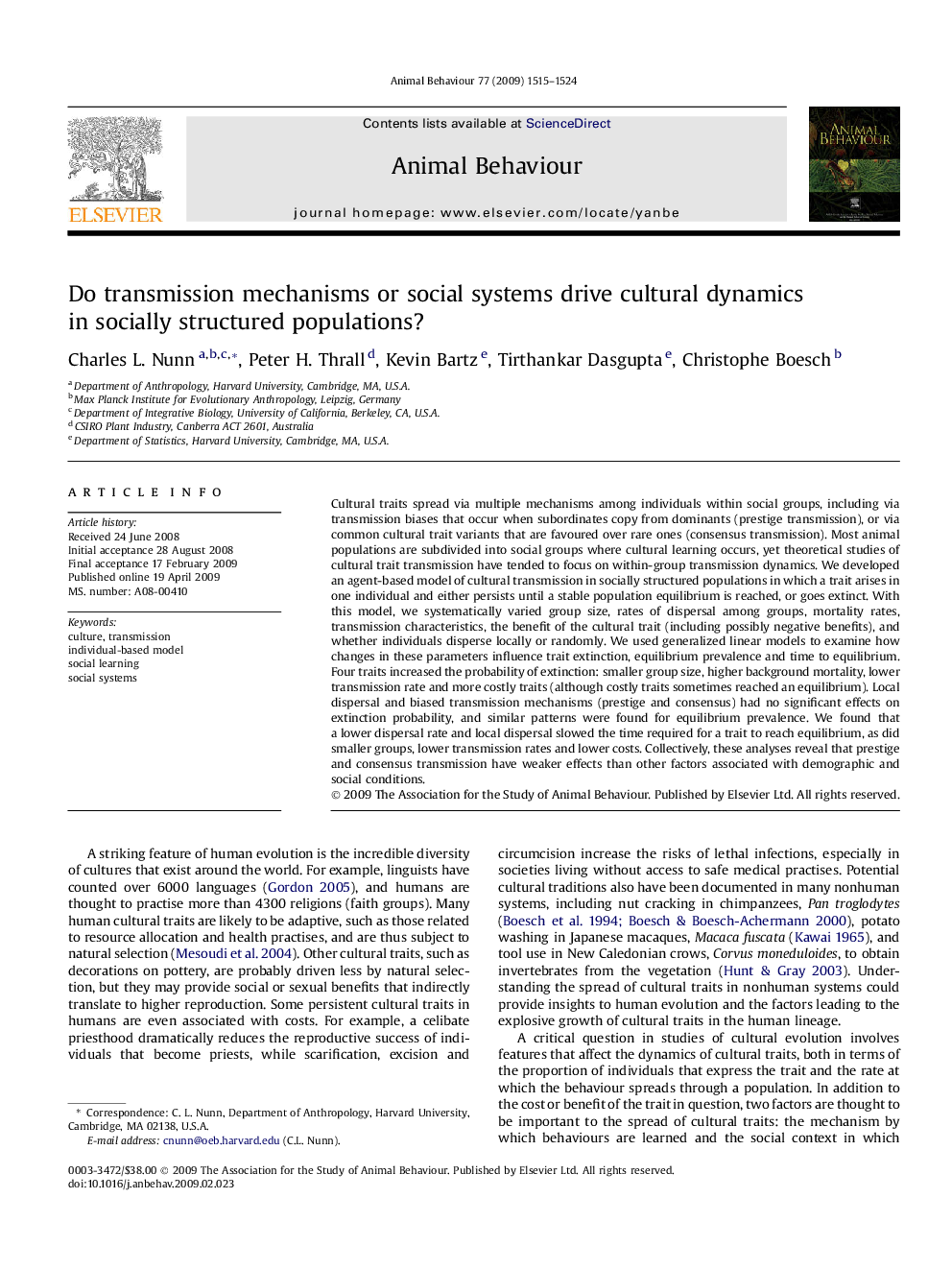| کد مقاله | کد نشریه | سال انتشار | مقاله انگلیسی | نسخه تمام متن |
|---|---|---|---|---|
| 2418043 | 1104335 | 2009 | 10 صفحه PDF | دانلود رایگان |

Cultural traits spread via multiple mechanisms among individuals within social groups, including via transmission biases that occur when subordinates copy from dominants (prestige transmission), or via common cultural trait variants that are favoured over rare ones (consensus transmission). Most animal populations are subdivided into social groups where cultural learning occurs, yet theoretical studies of cultural trait transmission have tended to focus on within-group transmission dynamics. We developed an agent-based model of cultural transmission in socially structured populations in which a trait arises in one individual and either persists until a stable population equilibrium is reached, or goes extinct. With this model, we systematically varied group size, rates of dispersal among groups, mortality rates, transmission characteristics, the benefit of the cultural trait (including possibly negative benefits), and whether individuals disperse locally or randomly. We used generalized linear models to examine how changes in these parameters influence trait extinction, equilibrium prevalence and time to equilibrium. Four traits increased the probability of extinction: smaller group size, higher background mortality, lower transmission rate and more costly traits (although costly traits sometimes reached an equilibrium). Local dispersal and biased transmission mechanisms (prestige and consensus) had no significant effects on extinction probability, and similar patterns were found for equilibrium prevalence. We found that a lower dispersal rate and local dispersal slowed the time required for a trait to reach equilibrium, as did smaller groups, lower transmission rates and lower costs. Collectively, these analyses reveal that prestige and consensus transmission have weaker effects than other factors associated with demographic and social conditions.
Journal: Animal Behaviour - Volume 77, Issue 6, June 2009, Pages 1515–1524